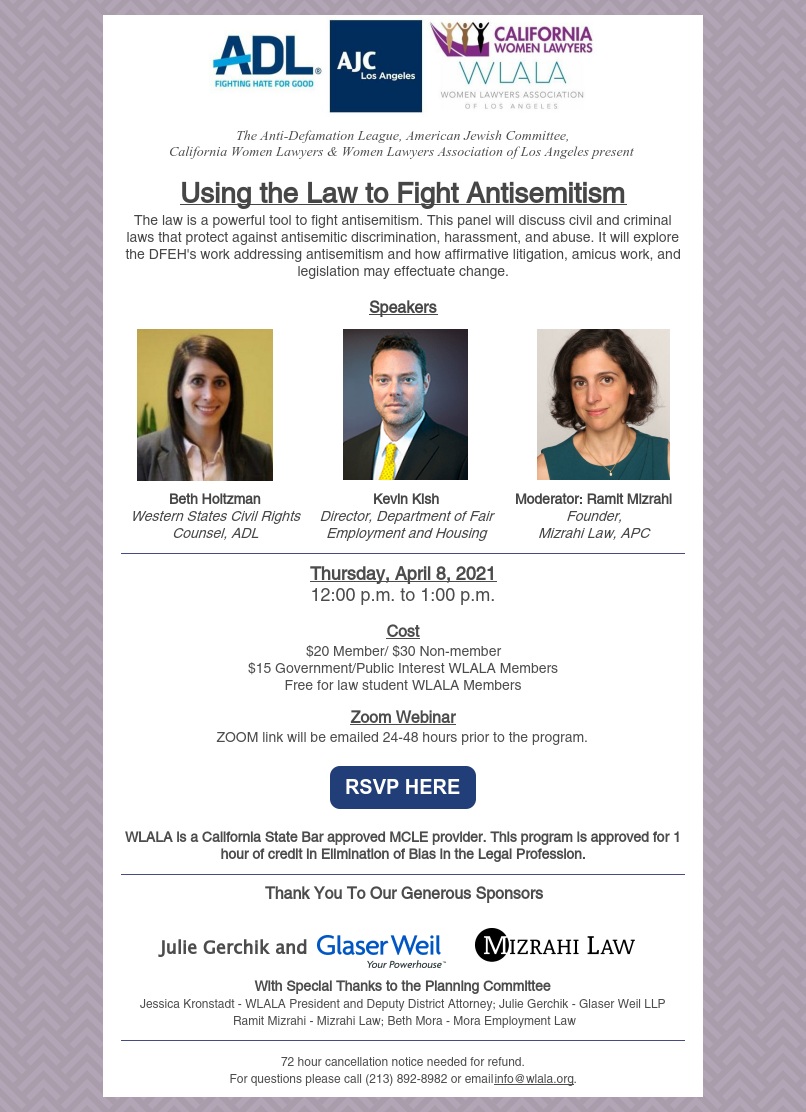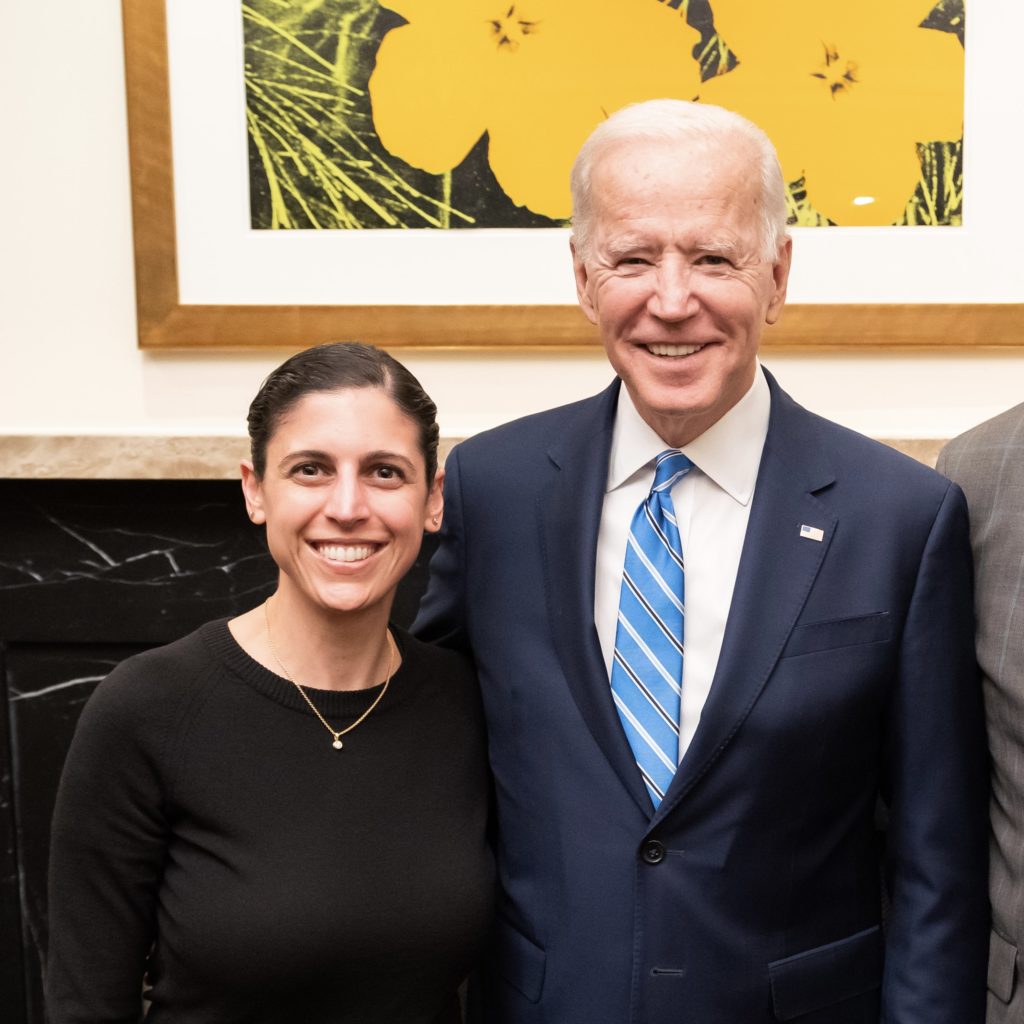-
15 Oct '21

With a Democratic supermajority in the California legislature and a Democratic governor (who survived a recall election), 2021 brings another slew of employment law bills that expand employee protections.
DISCRIMINATION AND HARASSMENT
SB 331 – “Silenced No More” Act – Non-Disclosure Agreements
The most important bill from this legislative session is SB 331, also known as the Silenced No More Act. SB 331 expands the protections created in 2018 by the Stand Together Against Non-Disclosures (STAND) Act (SB-820) and omnibus sexual harassment bill SB 1300. Those bills targeted attempts by employers to silence employees who have been sexually harassed or subjected to discrimination or retaliation based on sex. SB 331 ensure that these same protections apply to all employees subjected to discrimination, harassment and retaliation. It expands protections to claims based on all protected categories covered by the Fair Employment and Housing Act (FEHA), including race, religion, disability, age, veteran status, etc.
The STAND Act added Code of Civil Procedure Section 1001. Section 1001 prohibits confidentiality provisions in settlement agreements involving civil or administrative actions that state a cause of action for: sexual assault; workplace harassment or discrimination based on sex; failure to prevent workplace harassment or discrimination based on sex; sexual harassment in a business, service, or professional relationship; and sex discrimination, harassment, or retaliation by the owner of a housing accommodation.
SB 331 amends C.C.P. § 1001 to expand the prohibition on non-disclosure agreements to encompass claims of discrimination, harassment, or retaliation based on any protected category covered by the FEHA (not just those based on sex). This expanded prohibition applies to agreements entered into on or after January 1, 2022. SB 331 clarifies that C.C.P. § 1001 prohibits provisions that prevent or restrict the disclosure of such information.
SB 1300 had added Government Code § 12964.5, which made it unlawful for an employer, in exchange for a raise or bonus, or as a condition of employment or continuing employment, to: (1) require employees to sign a release of claim or right under the FEHA, or (2) to require employees to sign a nondisparagement agreement that gags employees from disclosing information about sexual harassment and other unlawful acts.
SB 331 amends Government Code § 12964.5 as follows:
-
12 Oct '21
After years of advocacy to raise the minimum wage, all California workers can look forward to a $15 an hour minimum wage by January 1, 2023.
While the federal minimum wage of $7.25 per hour has not changed in over a decade, states, counties, and cities all have the ability to set a minimum wage. Below, we summarize the minimum wages set by the State of California, Los Angeles City and County, and other cities within Los Angeles County. Employees are entitled to the highest applicable minimum wage.
State of California
California State Minimum Wage Effective Date Large Employers (26+ Employees) Small Employers (≤25 Employees) 1/1/2022 $15 per hour $14 per hour 1/1/2023 $15 per hour $15 per hour The State minimum wage will rise $1 per hour on January 1 of each year until it reaches $15 per hour for both small and large employers in 2023. Further details (including regarding the rare exceptions) can be found on the Labor Commissioner’s website.
City of Los Angeles and Unincorporated Areas of Los Angeles County
Los Angeles City and County Minimum Wage Rates Locality Minimum Wage (As of July 1, 2022) Unincorporated Los Angeles County $15.96 per hour Los Angeles City $16.04 per hour Pasadena $16.11 per hour Santa Monica $15.96 per hour ($18.17 for hotels) West Hollywood $16.50 per hour for large businesses, $16.00 per hour for small businesses, $18.35 per hour for hotel employers Malibu $15.96 per hour Long Beach $15 per hour for large employers, $14 per hour for small employers, different rates for hotel and concessionaire workers Cities Without Specified Minimum Wage Track State minimum wage -

Here’s a scenario that I come across regularly: A worker with health issues goes out on a medical leave under the Family and Medical Leave Act (FMLA) and/or the California Family Rights Act (CFRA). Her employer tells her that once her FMLA/CFRA leave is exhausted, she will be terminated if she cannot return to work immediately. The worker is unable to return to work at the required date and is fired.
Big mistake. Here’s why: Even if the worker’s leave is no longer covered by the FMLA/CFRA (or was not covered in the first place), other protections may apply, including those created by the Americans with Disabilities Act of 1990 (ADA) and California’s Fair Employment and Housing Act (FEHA). . .
-

Ramit Mizrahi has been recognized in U.S News & World Report’s 2022 Edition of The Best Lawyers in America© for her work in employment law representing individuals.
Ms. Mizrahi has also been selected to the 2022 Southern California Super Lawyers® list, again for her work in employment law representing individuals.
Both honors reflect peer recognition of excellence in practice.
This marks the tenth year that Ms. Mizrahi has been recognized by Super Lawyers®, including having previously been distinguished as being among the top 100 Rising Stars and top 50 Rising Stars women for three consecutive years.
Ms. Mizrahi and the Mizrahi Law team remain committed to serving as tenacious advocates for the firm’s clients while working to build collegiality and community in the legal profession.
-
28 Jul '21

On July 28, 2021, the New York Times investigated the practice by employers of encouraging employees who report workplace discrimination or harassment to use employer-sponsored mental health treatment. The article is titled “‘You’re the Problem’: When They Spoke Up About Misconduct, They Were Offered Mental Health Services.” Ramit Mizrahi was interviewed by the article’s authors, Alisha Haridasani Gupta and Ruchika Tulshyan, and is quoted several times in the article.On the surface, the practice of offering employees employer-sponsored mental health sessions might seem to be helpful to employees. But it can sometimes cause more harm than good.
First, employers have an obligation to take all reasonable steps necessary to prevent unlawful workplace discrimination and harassment. This means that when an employer receives a complaint of discrimination or harassment, it should conduct a prompt and thorough investigation and take corrective action as necessary. If an employer pushes an employee to take leave or seek therapy instead of investigating and taking corrective action, then it may not be fulfilling its legal obligations.
Second, when employees sue their employer for workplace discrimination or harassment and they allege emotional harm, some or all of their mental health records from that time period may become discoverable in litigation. Mental health records often reference sensitive information in a person’s life (for example, references to past abuse, family history information, third-party information, sexual history, addiction issues, etc.). If the employer is encouraging employees who complain about discrimination or harassment to seek mental health treatment so that it can later access those records and discover that information in the event of litigation, this can be potentially harmful to employees.
“If a potential client called me and said: ‘I’m being harassed at work, I feel really stressed and anxious. Do you think I should use my company’s E.A.P.?’” Ms. Mizrahi said, “I would advise them against it.”
-

Mizrahi Law is delighted to add Ellory Longdon to the team as our Legal Assistant and Intake Coordinator.
Ellory graduated with honors from the University of Southern California in 2021, double majoring in Health Promotion & Disease Prevention and Spanish. She was a USC Trustee Scholar, receiving a full-tuition scholarship for academic achievement, leadership, and community service.
While at USC, Ellory interned with the Alliance for Children’s Rights, a nonprofit that provides free legal services for children and families impacted by foster care. She also worked with the Los Angeles Mayor’s Office of Economic Opportunity to evaluate the impact of a federal community development grant on low and moderate-income LA communities. In 2021, Ellory conducted research on women’s health policy for the Los Angeles County Department of Public Health.
Ellory is passionate about civil rights, healthcare access, and public policy.
-
08 Apr '21
Mizrahi Law is proud to sponsor the Women Lawyers Association of Los Angeles panel on Using the Law to Fight Antisemitism.
The panel features Department of Fair Employment and Housing Director Kevin Kish and ADL’s Western States Civil Rights Counsel Beth Holtzman, and is moderated by Ramit Mizrahi. The recording remains available for purchase.

-
19 Mar '21

The pandemic continues to take its greatest toll on the most vulnerable among us. It has widened existing inequalities, including with respect to wealth, race, and gender. Indeed, while those who lost their jobs are struggling to make ends meet, many others are seeing their bank and investment accounts swell. American household wealth hit a record high at the end of 2020!
A newly-released report from the California Policy Lab, covered by the New York Times, contains shocking statistics that show just how unequal the pandemic has been in its impact on California workers. The data show that, since the start of the pandemic, about 47% of California workers have applied for unemployment insurance (regular unemployment insurance and pandemic unemployment assistance). However, the most vulnerable workers have borne the brunt of this unemployment.
As I have written previously, the pandemic has had a disproportionate impact on low-wage workers, women, and people of color. The California Policy Lab report explores these inequities in depth, looking at the impact by race/ethnicity, gender, age, educational attainment, and industry. To give some examples:
- About 90% of Black workers have filed for unemployment insurance benefits, as compared to about 41% of white workers.
- Women have applied for unemployment insurance at a rate 6% higher than men (51% vs. 45%).
- Workers with high school educations (or less) were nearly four times more likely to received benefits following the December extensions (55% vs. 14%).
- Workers between the ages of 16 and 23 were particularly hard hit, with about 69% filing for unemployment insurance benefits, as compared to 40-48% of those in the other age demographics.
As of February 2021, nearly 20% of California workers are still receiving unemployment benefits, a rate that is 50% higher than the peak during the Great Recession; they are now “long-term unemployed.”
While we may be seeing the light at the end of the tunnel with the pandemic, our economy and unemployment levels have a long way to improve.
-
22 Jan '21

On January 20, millions of Americans rejoiced as our new President and Vice President were sworn in. Women and girls wore Chucks and pearls to honor Kamala Harris and to celebrate her many firsts as Vice President—first woman, first Black American, and first of South Asian descent. We shed tears of joy, heaved sighs of relief, and felt hope for a better tomorrow.
President Biden delivered a powerful message of hope, unity, healing, and rebuilding. He promised an administration that would dedicate itself to fighting the pandemic, delivering jobs, addressing growing inequality, rebuilding the middle class, securing healthcare, seeking racial justice, returning to truth and transparency, and fighting hatred and divisions.
National Youth Poet Laureate Amanda Gorman captured the moment with her breathtaking poem, The Hill We Climb, which ended:
The new dawn blooms as we free it
For there is always light,
if only we’re brave enough to see it
If only we’re brave enough to be itAfter the inauguration, the President got to work, signing 15 executive orders on his first day in office. More have followed. Already, we see that this new administration, with the backing of the Senate and the House of Representatives, will implement sweeping changes to benefit workers throughout the country.
Here are some of the changes we can expect:
-
The January 2021 issue of the California Lawyers Association’s Labor & Employment Law Review features an article authored by Ramit Mizrahi, Andrew Friedman, and Tony Oncidi.
The article—”The Top Employment Cases of 2020″—highlights the most important California state and federal employment cases from last year. Click on the below image to read the article in full.
Ramit also spoke on two panels this month:
Thursday, 1/14/21, 3-5 p.m.
2020 Is Done: What’s New In 2021?
Program by: Consumer Attorneys Association of Los Angeles
Description: Stay up-to-date on the laws that affect your practices. This program covers new housing laws post-COVID, new employment laws, a personal injury perspective on Proposition 22, and anticipated and current legal challenges to the new laws.Thursday & Friday, 1/20/21-1/21/21
2021 New Employment Law Practitioner 2021
Program by: California Lawyers Association Labor & Employment Law Section
Description: This is the perfect program for the new lawyers, paralegals, and legal assistants who work with you to learn about the basics of employment law. The program will have six panels: Employment Law 101 (discrimination, harassment, retaliation), Leave of Absence Compliance, Wage and Hour 101, Ethics & Bias During Pandemic Times, California Privacy Rights Act’s Top 10, and Complying with the NLRA.

